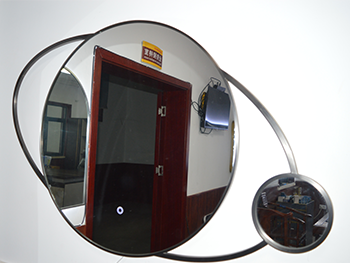
How Multifunctional Smart Mirrors Enhance Lighting and Visibility
Introduction
In recent years, smart technology has revolutionized everyday objects, transforming them into intelligent, interactive devices. One such innovation is the multifunctional smart mirror, which combines traditional reflective surfaces with advanced digital features to enhance lighting, visibility, and overall user experience. Unlike conventional mirrors, smart mirrors integrate lighting systems, sensors, and software to provide optimal illumination, reduce glare, and improve clarity in various environments.
This article explores how multifunctional smart mirrors enhance lighting and visibility through adaptive lighting technology, anti-glare features, high-definition displays, and personalized settings. Additionally, we will examine their applications in homes, retail spaces, and professional settings, highlighting their benefits over traditional mirrors.
1. Adaptive Lighting Technology
One of the most significant advantages of smart mirrors is their ability to adjust lighting dynamically based on environmental conditions and user preferences.
a. Automatic Brightness Adjustment
Smart mirrors are equipped with ambient light sensors that detect the surrounding lighting conditions. They automatically adjust brightness to ensure optimal visibility without causing eye strain. For example, in dimly lit bathrooms, the mirror can increase illumination, while in well-lit environments, it reduces brightness to prevent harsh reflections.
b. Color Temperature Control
Different lighting scenarios require varying color temperatures. Smart mirrors often feature adjustable LED lighting with options ranging from warm (2700K) to cool (6500K) tones. Warm lighting is ideal for creating a relaxing atmosphere in bedrooms, while cooler tones simulate daylight, making them perfect for makeup application or shaving.
c. Task-Specific Lighting Modes
Many smart mirrors offer preset lighting modes tailored for specific activities:
- Makeup Mode: Provides even, shadow-free illumination to ensure accurate color representation.
- Shaving Mode: Enhances visibility around facial contours with focused lighting.
- Vanity Mode: Mimics natural daylight for a realistic reflection.
These adaptive lighting features ensure that users always have the best possible visibility for their needs.
2. Anti-Glare and Reflection Control
Glare and excessive reflections can distort images and reduce visibility. Smart mirrors address this issue through advanced optical technologies.
a. Polarized and Anti-Glare Coatings
Some smart mirrors use polarized glass or anti-reflective coatings to minimize glare from external light sources. This is particularly useful in brightly lit bathrooms or retail environments where overhead lighting can create distracting reflections.
b. Dynamic Dimming
Certain high-end smart mirrors incorporate electrochromic or liquid crystal technology to adjust reflectivity dynamically. When the display is active, the mirror can darken slightly to improve screen visibility while maintaining a clear reflection when the display is off.
c. Adjustable Viewing Angles
Unlike traditional mirrors, smart mirrors can optimize viewing angles to reduce distortions. Some models feature curved or tilted designs that enhance visibility from different positions, ensuring a consistent reflection regardless of the user’s stance.
3. High-Definition Displays and Augmented Reality
Many smart mirrors incorporate high-resolution displays that overlay digital information onto the reflective surface, enhancing functionality without compromising visibility.
a. Embedded Touchscreen Displays
Some smart mirrors feature built-in touchscreens that allow users to access apps, weather updates, or virtual styling tools. The display remains transparent when not in use, preserving the mirror’s primary function.
b. Augmented Reality (AR) for Enhanced Visibility
AR-powered smart mirrors can superimpose virtual elements onto the reflection, offering features such as:
- Virtual Try-On: In retail, customers can see how makeup, glasses, or clothing items look without physically trying them on.
- Skincare Analysis: Some mirrors use AI to analyze skin conditions and recommend products based on real-time visibility enhancements.
These features improve visibility by providing interactive, real-time feedback that traditional mirrors cannot offer.
4. Personalized Lighting and Visibility Settings
Smart mirrors often include user profiles that store individual preferences for lighting, display settings, and even health metrics.
a. Customizable Profiles
Users can save their preferred brightness levels, color temperatures, and display configurations. For households with multiple users, the mirror can automatically switch settings based on facial recognition or manual selection.
b. Voice and Gesture Control
Hands-free operation enhances convenience. Voice commands (via Alexa, Google Assistant, or Siri) or simple gestures allow users to adjust lighting without touching the mirror, ensuring a seamless experience.
c. Integration with Smart Home Systems
Smart mirrors can sync with other smart devices to optimize lighting conditions. For example, they can coordinate with smart bulbs to create uniform illumination throughout a room, further enhancing visibility.
5. Applications in Different Environments
The benefits of smart mirrors extend beyond residential use, improving lighting and visibility in various professional and commercial settings.
a. Home Use
- Bathrooms: Provides optimal lighting for grooming tasks.
- Bedrooms: Acts as a vanity mirror with adjustable lighting for makeup or skincare routines.
- Entryways: Offers full-length visibility with integrated lighting for outfit checks.
b. Retail and Fashion
- Dressing Rooms: Allows customers to see how clothes fit under different lighting conditions.
- Beauty Counters: Enhances makeup trials with AR and professional-grade lighting.
c. Healthcare and Wellness
- Medical Diagnostics: Some smart mirrors assist in dermatological assessments by improving visibility of skin conditions.
- Fitness Studios: Provides real-time posture correction and workout guidance via embedded displays.
6. Energy Efficiency and Sustainability
Unlike traditional mirrors with fixed lighting, smart mirrors optimize energy consumption by using LED technology and automatic dimming features. Motion sensors can activate lighting only when needed, reducing electricity waste.
Conclusion
Multifunctional smart mirrors represent a significant leap forward in lighting and visibility technology. By incorporating adaptive lighting, anti-glare features, high-definition displays, and personalized settings, they provide superior functionality compared to conventional mirrors. Whether in homes, retail spaces, or professional environments, smart mirrors enhance clarity, reduce eye strain, and offer interactive capabilities that improve daily routines.
As smart technology continues to evolve, future iterations may include even more advanced features, such as holographic displays and AI-driven health monitoring, further solidifying their role as essential, multifunctional tools in modern living.
(Word count: ~2000)
This website uses cookies to ensure you get the best experience on our website.
Comment
(0)